The trouble with spring in much of the eastern U.S. is the abundance of fishing options. In central Pennsylvania, I have several weeks of pre-spawn musky fishing, trout fishing is in full swing with ideal water conditions and hatching insects, and there is also the option to fish local lakes and ponds for panfish. With comfortable weather, mountainsides turning green, flowers starting to blossom, and fishing conditions starting to reach their peak—I can’t think of a better place to live than the northeast during spring. While I consider trout my favorite species to target, some of my favorite fishing moments include fishing for panfish. Why?
As my friend Jeff Currier once said, “panfish are therapy.” I think the point he was getting at is that panfish are often not going to present a major fishing challenge or consume anglers with the chance to catch a large fish. Instead, panfish will provide any level angler with the opportunity to catch lots of small fish with minimal effort and skill. This is why panfish are excellent for beginners and children, who often need “quick victories” when learning to fish. And, in truth, sometimes I‘m not eager to crawl on my hands and knees to stalk a large trout, becoming frustrated after continuous failures to either match the hatch or properly present a dry fly to a fish eating on the surface. Sometimes, all I want to do is catch fish. This is when I panfish.
Timing
When using the word panfish, I’m including perch, crappie, bluegill, pumpkinseeds and so on. I’ve read numerous times that panfish prepare to spawn by moving into the shallows when water temps begin reaching 60 degrees. Depending on the weather, I’ve seen decent migrations of panfish starting around early April. If you don’t have a thermometer, you can often look off the shoreline or bridge to see if you notice any small dark shadows moving about. I drive by a well-known panfish lake every day, paying close attention to the number of anglers I see fishing from shoreline. I also look at fishing apps and social media to see what people are posting.
By early to mid-May, the spawn is in full swing, with adult panfish protecting their nests and aggressively striking at any small object presented nearby. Often, the best panfish opportunities occur when sulphurs are hatching on my nearby trout streams, forcing me to choose between panfish and trout. Early mornings can be good following warmer nights, but I’ve found panfishing to be best during the warmest part of the day as water temps continue to climb. While early morning panfishing can be done following a cold night (e.g. nights with frost warnings), I usually wait to hit the water until afternoon

Where to Fish
One good thing about panfish during the pre-spawn and peak spawn times is most of the best fishing is found directly off the shoreline. When working with my Penn State Students, I tell them to stand along the shoreline and extend their 9’ rods towards the water. Then I point out that most panfish are within that distance of the bank. This means not casting out into the abyss but instead making short casts parallel to the shoreline. If you hold a long rod over the bank and can flick a short cast, you possess all the casting skill needed to tackle most panfish scenarios.
Just as with most types of fishing, when in search of panfish, look for small rocks, submerged logs, points along shorelines that poke out into the lake, along with any overhanging tree limbs or vegetation. One lake our Penn State students spend time fishing has a predominant wind that blows floating logs and other debris towards a dam breast. All the students need to do is walk along the dam and locate any log floating along the shoreline and they’ll find fish. If the water is off color, they can simply make a few casts into a new area to scout out a spot. You will often get an immediate strike if panfish are present. If you fish an area for a few minutes without a strike—keep moving until you find fish. Panfish are not bashful.
Flies to use
Another thing I like about panfishing is that it gives new life to older trout patterns I haven’t used in years. It gives me an opportunity to hand out old patterns to my students needing a few extra flies during our field trips. For myself, I like fishing gaudy micro buggers (pictured below). The first is a #12-14 nymph hook with a short stubby marabou tail, micro polar chenille body and fluorescent tungsten bead. The second is a micro version of Chuck Kraft’s Kreelex streamer in a similar length and size to the micro bugger. The third pattern I carry is a smaller #14 foam ant which I can both drift and pop like a bass popper on the water. Foam is durable and floats with little maintenance, which is something you’ll need with the number of fish that will be eating your fly. As for fly size, I use smaller patterns as the panfish on my waters tend to run on the smaller size. When I keep missing trikes on the micro jigs or notice panfish are unable to engulf my dry fly, then I know it may be time to use a smaller or shorter pattern.Using these patterns in a few sizes and color options is typically all I need to catch panfish.



Presentation
I like to keep my fly moving when pursuing panfish. Since panfish strikes are often aggressive and abundant, a strike indicator is not really needed to detect strikes. However, I will use pinch-on foam indicators on my rig as an attractor to lure nearby fish towards my fly. Normally, I keep a short distance between indicator and jig fly (approximately 20 inches). Once the cast is made and the jig fly settles under the indicator, I like to aggressively tap my index finger along the blank of the rod while I slowly pull or retrieve the indicator towards shoreline.
The tapping movement does two things. First, it adds a tantalizing movement to the fly. You’ll know what I mean when fishing brightly-colored patterns as the tails vibrate in the water column as the pattern jigs up and down during the retrieve. While you can just cast, sit, and wait for something to hit your jig streamer—I find this little bit of effort produces big results. Second, the bobbing indicator creates a wake on the surface, acting as an attractor to panfish. Something in a panfish's DNA attracts it to potential food items waking on the surface. During colder weather or periods of less activity, the attraction of the bobber lures the fish towards the jig streamer. However, during warmer days and periods of greater fish activity, panfish will begin striking the indicator itself. When this happens, it’s time to fish a dry fly on the surface—like a foam ant, beetle, or any high floating pattern that you can pop on the surface repeatedly with no maintenance needed.

Equipment
Equipment doesn’t matter with panfish. Any trout rod, fly line and a 6’ plus leader with a 4-5X tippet will get the job done for you. If you plan to release fish, then I suggest bringing a longer pair of forceps to remove hooks as panfish can swallow a fly deep, making it difficult to remove the hook with just your hands. An outfit, leader, few flies, and pliers is all you’ll need to enjoy your time along the water. Maybe that is why I enjoy panfish so much—it reminds me that fly fishing doesn’t need to be complicated to have a memorable time on the water.





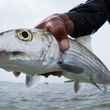





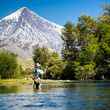









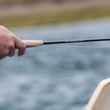




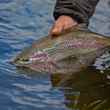

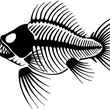

Comments
Tim replied on Permalink
Couldn't agree more with your comments on the fun of panfishing with your fly rod!
Anonymous replied on Permalink
Looks like Colyer Lake in the photo above of the woman catching a fish surrounded by canoes. I just fished there last Tuesday for my first outing of the year. I like Colyer Lake because it a quick drive, although I plan to hit Spring Creek a lot more this year.
Roger Golden replied on Permalink
Have you fished in any other regions throughout the USA or just in Pennsylvania? Much of what you have suggested works in most regions, however, there are any number of different aqueous environs throughout the USA where other strategies will be needed. For instance fishing from a float tube or other aquatic floatation crafts that allow for fishing deep water for suspended fish that seek a thermocline that suits their metabolism. Another component that is an invitation to creativity and innovation is tying flies without the expense of "fly tying"material(s). Human hair, cat hair, rabbit hair, laundry lint from the flower in dryers, copper wire, older fly line and many other free materials make for an interesting challenge in enticing fish to eat. Lots of fun and very therapeutic.
Pages